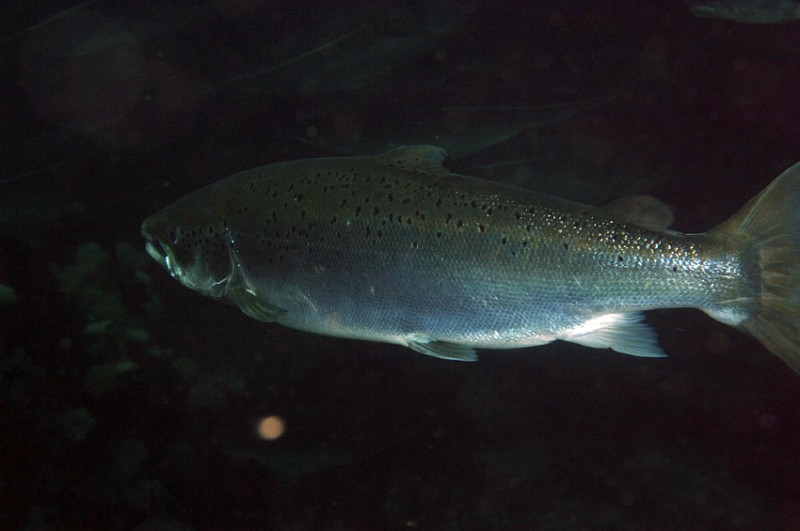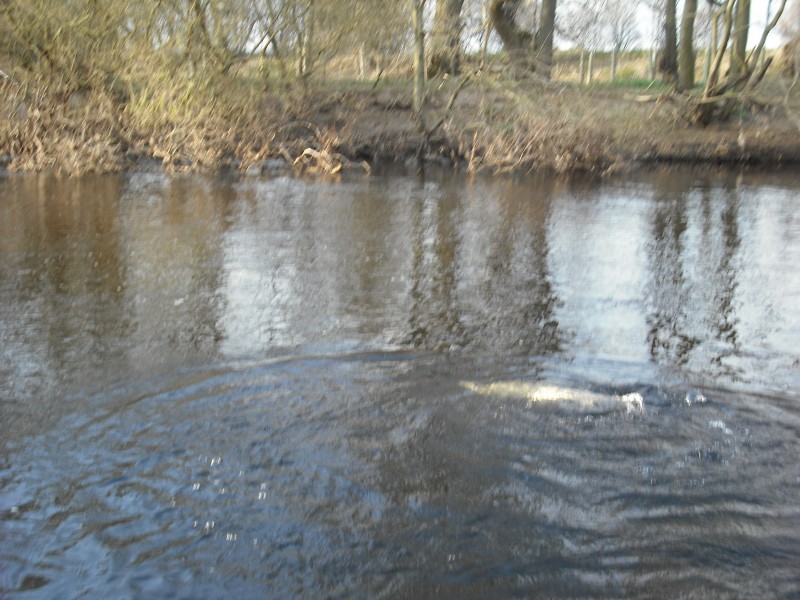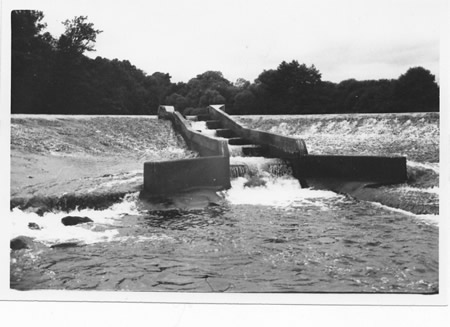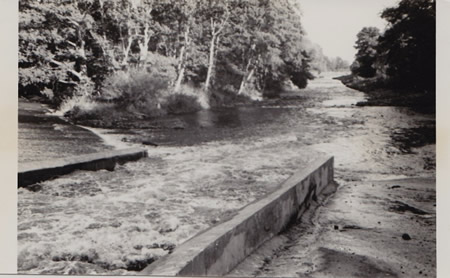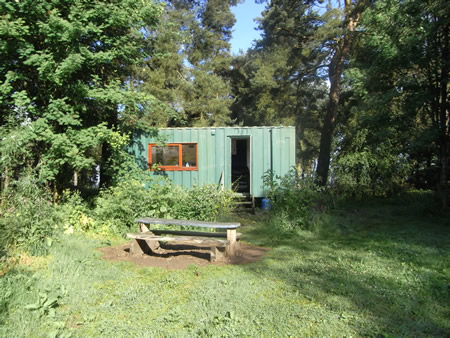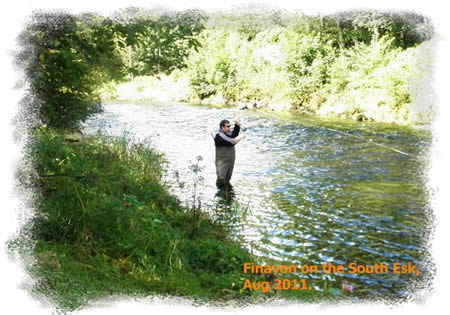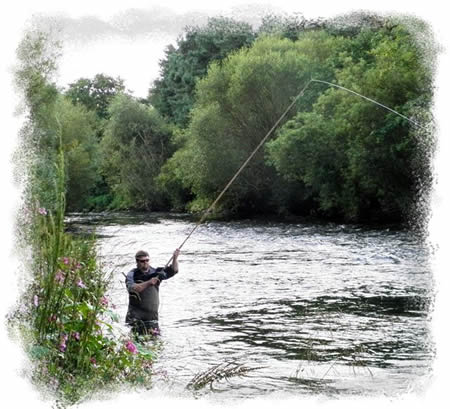These bulletin blogs represent news about Finavon and the South Esk, and my views as a riparian owner. They are not the views of any other organisation, nor are they designed to promote the interests of any individual or organisation other than Finavon Castle Water and factors affecting the fishery. Tony Andrews
The table below shows salmon catches at Finavon between 1900 and 2011 in the months of February, March, April & May. I have also included some notes on exploitation effort, comparative catches from other beats, alterations to fish passes & other variables
Sources: Finavon Estate records & records from other South Esk fishings.
| Year | Feb | March | April | May | Total | COMMENTS from Cyril Butler’s notes 1895 to 2000. Tenant FCW for 50 years. Also other beats & whole river catches. |
| 1900 | – | – | 3 | 1 | 4 | Inshewan season 16xS & 18xST |
| 01 | – | 1 | 1 | 2 | 4 | Inshewan 3xS & 5xST |
| 02 | – | 1 | 3 | – | 4 | Inshewan 13xS & 16xST |
| 03 | – | 1 | – | – | – | Many salmon in Oct & Nov 03 at FCW Inshewan 26xS & 22xST |
| 04 | – | 1 | 1 | 1 | 3 | |
| 05 | – | – | 3 | 3 | 6 | |
| 06 | – | – | 1 | 1 | 2 | |
| 07 | – | – | 1 | – | 1 | |
| 08 | – | – | – | 1 | 1 | |
| 09 | – | – | 6 | 1 | 7 | |
| 10 | – | 1 | – | 1 | 2 | |
| 11 | – | – | 5 | 2 | 7 | |
| 12 | – | 1 | – | – | 1 | |
| 13 | – | – | 3 | 9 | 12 | |
| 14 | – | 3 | 1 | 1 | 5 | |
| 15 | – | 1 | 4 | 1 | 6 | |
| 16 | – | – | 2 | 1 | 3 | |
| 17 | – | 1 | 1 | – | 2 | |
| 18 | – | – | – | – | – | |
| 19 | – | – | 9 | 1 | 10 | Driest year since 1868 |
| 20 | – | 13 | 7 | 10 | 30 | |
| 21 | – | – | 10 | 3 | 13 | |
| 22 | – | – | – | 8 | 8 | Proprietor above Brechin wrote, “1922 bag spring salmon 4. River in 1st class order but 220 salmon killed by Kinnaird rods & over 600 netted at Brechin dyke” (CB) |
| 23 | – | 4 | 15 | 7 | 26 | Brechin river netting ended but only after the same proprietor (see 1922) wrote “5 fish in spring. River in beautiful condition but Brechin nets stopped all the fish” (CB) |
| 24 | – | – | 20 | 10 | 30 | |
| 1925 | – | 11 | 33 | 20 | 64 | Best spring year recorded at FCW but CB thought kelts were counted too. “Kinnaird Dyke greatly improved. Nearly 400 salmon taken above Brechin” (CB) |
| 26 | 1 | 2 | 3 | 4 | 9 | 19lbs fish caught on 20/2 .”Spring run has been increasing since 1895″ (CB) |
| 27 | – | 12 | 14 | 1 | 27 | “low effort. 250 salmon & 377 ST above Brechin” (CB) |
| 28 | – | 12 | 10 | – | 22 | New dam built at Persie on Prosen (Menzies comments in report of 1957) |
| 29 | – | – | – | – | – | “About 130 salmon & 346 ST. Only 21 salmon killed in spring. Inshewan returned 110 ST. Salmon 30lbs & 35lbs killed at Shielhill”. (CB) |
| 30 | – | – | 7 | 9 | 16 | “autumn run comes in mid Nov. 69 in spring. 35 grilse. 170 autumn. 843 sea trout” (CB) |
| 31 | – | – | 11 | 25 | 36 | Sir Kirkman Finlay lease to 1935. Aldbar Estate sold (Kintrockat) “398 spring fish in whole river, including Kinnaird. 719 sea trout” (CB) |
| 32 | – | 6 | 12 | 9 | 27 | “805 dead fish removed from river to end of Feb. Little fungus but some furunculosis. All S Esk cattches: Spring salmon 349, summer & autumn 237. Grilse 10. ST 648.” (CB) |
| 33 | – | – | 7 | – | 7 | “128 spring salmon caught below Brechin. Very dry season. Poorest fishing in memory. spring 128. 6 grilse. 78 autumn & 411 ST” (CB) |
| 34 | – | 6 | 3 | 4 | 13 | “Improvement on 1933 but fish ct above Brechin disappointing. 324 spring fish (234 below Brechin & 90 above) 23 grilse. 187 summer. 611 ST.” (CB) |
| 35 | – | 6 | 6 | 5 | 17 | “Brechin Paper Mill Dam breached in late autumn by agreement. 399 spring(256 below Brechin: 143 above) 11 grilse. 253 summer. 461 ST.” (CB) |
| 36 | – | 1 | 2 | – | 3 | “ADG-G & Mr John Ogilvy inspected Kinnaird Dyke and saw large numbers of fish, many diseased. Approach to pass too shallow. Repairs recommended & executed. Whole river: 239 spring (212 below Brechin). 9 grilse. 120 S&A salmon. 517 ST.” (CB) |
| 37 | – | 1 | 7 | 4 | 12 | “Exceptional flood in mid January damaged Kinnaird Dyke. ” (CB) |
| 38 | – | 1 | – | 3 | 4 | Duke of Wellington tenancy at FCW starts. “486 spring (349 below Brechin). No grilse. 214 S&A. (121 above Brechin). 537 ST.” (CB) |
| 39 | – | 8 | 18 | 3 | 29 | “Southesk Estates complain about damage to Kinnaird dyke. 209 spring (121 below Brechin). 22 grilse. 158 S&A. 1089 ST.” (CB) |
| 40 | – | 1 | 20 | 14 | 35 | “Major Chalmers (Aldbar & Kintrockat) tried unsuccessfully to buy Mill Dyke & fishings from Lord S Esk. Springers 201 (86 below Brechin – a v. poor year) grilse 13. S&A 174. 1068 ST.” (CB) |
| 41 | – | – | 17 | 15 | 32 | “Mr Walker Craigeassie started to raise height of dyke. Fishery Board negotiated a gap designed by Mr Menzies in summer 1940” (CB) |
| 42 | – | – | 6 | 12 | 18 | Low effort. I think Terence Horsley was a tenant at FCW in 1941/42. |
| 43 | – | – | – | 6 | 6 | |
| 44 | – | 1 | 6 | 2 | 9 | “River pollution case. Calderwood put damage at £1500 salmon alone”. (CB) |
| 45 | – | 13 | 9 | 12 | 34 | Rubble dyke at Tannadice breached |
| 46 | – | – | 1 | – | 1 | |
| 47 | – | – | 12 | 24 | 36 | Malloch & Macfarlane report on Kinnbaird dyke improvements completed” (CB) |
| 48 | – | 1 | 8 | 6 | 15 | |
| 49 | – | 3 | 10 | 1 | 14 | Malloch & Macfarlane plan |
| 50 | – | 2 | 5 | 8 | 15 | |
| 1951 | – | 1 | – | – | 1 | |
| 52 | – | 1 | 5 | 7 | 13 | The first year of consolidated Scottish salmon & sea trout catches. |
| 53 | – | – | 1 | 3 | 4 | Low effort (one rod only) |
| 54 | – | 13 | 10 | 6 | 29 | |
| 55 | – | – | 4 | 5 | 9 | Repairs to Kinnaird fish pass. Kinnaird in-river nets terminated from 1 Dec 1955 (CB) |
| 56 | – | – | – | – | – | |
| 57 | – | – | 7 | 8 | 15 | |
| 58 | – | – | 3 | 11 | 14 | |
| 59 | – | – | 9 | 12 | 21 | |
| 60 | – | – | 8 | 12 | 20 | |
| 61 | – | – | 10 | 7 | 17 | |
| 62 | – | – | 4 | 10 | 14 | |
| 63 | – | – | 1 | 9 | 10 | |
| 64 | – | – | 4 | 24 | 28 | |
| 65 | – | – | 2 | 7 | 9 | |
| 66 | – | – | 6 | 21 | 27 | |
| 67 | – | – | 3 | 5 | 8 | Kinnaird fish pass altered. UDN |
| 68 | – | – | – | 1 | 1 | UDN |
| 69 | – | – | 1 | 4 | 5 | |
| 70 | – | – | 1 | 2 | 3 | New Kinnaird pass built. 24lbs April salmon (Cyril Butler Tyndals) |
| 71 | – | – | 1 | – | 1 | |
| 72 | – | – | 3 | 2 | 5 | |
| 73 | – | – | – | 2 | 2 | |
| 74 | – | – | 1 | 1 | 2 | |
| 75 | – | – | 1 | – | 1 | |
| 76 | – | – | 3 | 1 | 4 | |
| 1977 | – | – | 4 | 12 | 16 | Upper Kinnaird (just below the infamous dyke) 469 salmon |
| 78 | – | – | 3 | 3 | 6 | Upper Kinnaird 915 salmon |
| 79 | – | – | 3 | – | 3 | Upper Kinnaird 369 salmon |
| 80 | – | – | 3 | 5 | 8 | Upper Kinnaird 897 salmon |
| 81 | – | – | 5 | 1 | 6 | Upper Kinnaird 190 salmon |
| 82 | – | – | 2 | – | 2 | Upper Kinnaird 176 salmon |
| 83 | – | – | – | 2 | 2 | Upper Kinnaird 317 salmon |
| 84 | – | – | – | – | – | Upper Kinnaird 353 salmon |
| 85 | – | – | – | 1 | 1 | AA/MS ownership begins at FCW. Upper Kinnaird 382 salmon |
| 86 | – | – | – | 11 | 11 | Fishing effort low FCW. Upper Kinnaird 453 salmon |
| 87 | – | – | 1 | 2 | 3 | Still low effort at FCW. Upper Kinnaird 294 salmon |
| 88 | Upper Kinnaird 253 salmon | |||||
| 89 | Upper Kinnaird 200 salmon | |||||
| 90 | 1 | 2 | 5 | – | 8 | 1XFeb fish caught by APHA at FCW. Upper Kinnaird 261 |
| 91 | – | 1 | 2 | – | 3 | Upper Kinnaird 283 salmon |
| 92 | – | 1 | 6 | 3 | 10 | Upper Kinnaird 336 salmon |
| 93 | – | 1 | 2 | 6 | 9 | Upper Kinnaird 204 salmon |
| 94 | – | 1 | 5 | 2 | 8 | MS/AA ownership ends. Upper Kinnaird 199 salmon. In the years 1977 to 1994 the average number of salmon killed in the 750 yards of the Upper Kinnaird beat was 339. Most of these fish were caught before the end of May. In the same years few salmon gained access to the river upstream of Brechin before mid April. The reason was of course the temperature barrier of the dyke itself. (This has now been improved) (TA) |
| 95 | – | – | 1 | 3 | 4 | Montrose Basin netting ends |
| 96 | – | 1 | 5 | 19 | 25 | |
| 97 | – | 2 | 1 | 3 | 6 | |
| 98 | – | – | 5 | 10 | 15 | Kinnaird fish pass altered (Carnie) |
| 99 | ||||||
| 2000 | – | – | 4 | 3 | 7 | |
| 01 | – | – | 5 | 5 | 10 | |
| 02 | – | 1 | 3 | 1 | 5 | |
| 2003 | – | 1 | 1 | – | 2 | |
| 04 | – | 2 | 5 | 6 | 13 | Montrose Bay nets bought out by monies raised from Esk District levies and other sources |
| 05 | – | 3 | 3 | 2 | 8 | Boddin nets sold to Pullar family by Martin stansfeld for £100,000 |
| 06 | 1 | 7 | 19 | 6 | 33 | Feb fish verified. Low effort |
| 07 | 1 | 6 | 1 | 5 | 13 | Low effort |
| 08 | – | 3 | 6 | 2 | 11 | Kintrockat Dam breached. Low effort. Excellent autumn fishing this year (FCW 220 S & G) |
| 09 | – | – | 8 | 13 | 21 | Two big fish (well into the 20s of lbs) seen from Haughs Aqueduct. Low effort because of low water. |
| 10 | – | – | 12 | 1 | 13 | May very low water. Potentially a good spring run, ruined by low water. Hence Low effort in the late spring. |
| 11 | – | 8 | 7 | 18 | 33 | Prolific spring salmon run. Effort up. Colin Gibb at Inshewan commented “the best spring run since the 1960s”. Usan nets did well too. Large numbers of fish, many diseased, seen in Sawmill Dam Pool in late April. |
It is important to appreciate that fishing effort varied enormously during these 111 years. There are clues occasionally which have enabled me to assess effort. For example, between 1935 and 1940 there was a local syndicate during the sea trout season. I have spoken to the families of some of those Forfar shop owners and traders, from which it became clear that members of that syndicate were regulars and their skill level was high. The catches reflect that. On the other hand, particularly in the early years of the twentieth century, effort was desultory and sometimes non existent. I suspect that, during the years when the spring catch dominated the returns, noone really bothered to fish after about mid June, and sea trout were simply not valued.
One of the jobs on my ‘to do’ list is to try to devise a method of measuring effort, somehow incorporating skill and local knowledge as important factors in measuring the effectiveness of the effort made. For example, if it is Derek Strachan or Moray Macfarlane fishing for spring salmon in late March they will know where these early running fish are likely to be in the cold strong flows of emerging spring. That knowledge means that one hour spent on the river by an experienced local rod probably is the equivalent of 2 or 3 hours of someone new to the river.
TA
